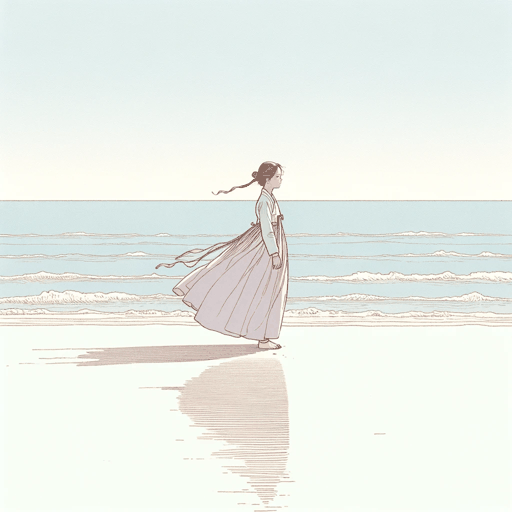111 pages • 3 hours read
Min Jin LeePachinko
Fiction | Novel | Adult | Published in 2017A modern alternative to SparkNotes and CliffsNotes, SuperSummary offers high-quality Study Guides with detailed chapter summaries and analysis of major themes, characters, and more. For select classroom titles, we also provide Teaching Guides with discussion and quiz questions to prompt student engagement.
Summary and Study Guide
Overview
Pachinko, written by Min Jin Lee and published in 2017, is the story of five generations of a Korean family living in both Korea and then later Japan from 1910 to 1989. Pachinko was a finalist for the National Book Award for Fiction in 2017. In Book 1, “Gohyang/Hometown 1910-1933,” the opening setting is the village of Yeongdo, Korea. The reader is introduced to the first generation of the family, the mother and father of Hoonie. They are a hardworking couple and teach Hoonie their values of hard work. They love Hoonie greatly, but they also know not to spoil him. They are full of joy when he is able to find a wife, Yangjin, despite his physical impairments. Hoonie and Yangjin have one daughter, Sunja. She is much loved by her parents. When Hoonie dies of tuberculosis, they grieve him deeply.
When Sunja is seduced by a local businessman, Koh Hansu, and becomes pregnant, her mother doesn’t know what to do until one of her boarders, Baek Isak, a Presbyterian minister traveling to Japan, offers to marry Sunja. He has lived much of his life as an invalid, and even though he thinks he may die young and leave Sunja a young widow, he wants to do something meaningful with his life by giving the family a chance for a life without ostracism.
When Sunja and Isak move to Osaka, Japan, they are welcomed by Isak’s brother, Yoseb, and his wife, Kyunghee. But life in Japan is difficult. In 1910, Japan annexes Korea. Korea’s colonial status creates great hardship for Koreans. They are discriminated against both at home and abroad. Yoseb warns his brother to be very careful. Sunja gives birth to a son, Noa.
In Book 2, “Motherland 1939-1962,” Noa is 6 years old when Isak is arrested for his religious practices. Life dramatically changes for the family. Sunja must learn to make money by selling kimchi in the market; later, she gets a job working at the restaurant. She has no idea that her job has been created by Hansu, who has learned of her circumstances. When they finally reunite, he tells Sunja to move the family to the countryside so they can escape the bombing that he knows is coming and will end the war. Hansu is also able to bring Yangjin from Korea, and the mother and daughter reunite.
When the family moves back to Osaka after the war, Sunja resists Hansu’s efforts to pay for Noa’s education, since she worries about Hansu having influence over her son’s life. But the cost of university is too high, and Hansu does pay for all of Noa’s tuition, room, and fees. Noa is happy to have such a benefactor.
The story then begins to shift to the brothers. Mozasu, who hates school and gets into fights, drops out of school to work in the pachinko gambling parlors. Once he has a job, he is very hard-working and becomes successful. His boss promotes him to manager. He meets Yumi, who becomes his wife.
Meanwhile, Noa’s fortunes take a dramatic turn when he finds out Hansu is his father. He drops out of the university and moves to another city, refusing to tell his family where he is. Noa tells no one that he is Korean, instead passing for Japanese.
In Book 3, “Pachinko 1962-1989,” Noa finds a job in Nagano and soon builds a successful career in the pachinko industry. He gets married and has four children. He does not reach out to his family, and they are heartbroken, especially Sunja. She tells Mozasu that Noa dropped out of school because it was too hard for him, but Mozasu finds this hard to believe. When Hansu is finally able to locate Noa and brings Sunja to him, she embraces him, wanting him to come home and reunite with his family. Noa promises to do so, but when she leaves, he kills himself. Sunja does not attend the funeral, so Noa’s wife and children never learn of Noa’s Korean family.
Meanwhile, Mozasu builds a family with Yumi; their son is Solomon. When Solomon is 3 years old, Yumi saves his life by pushing him out of the way when a car loses control and comes toward them; she dies of her injuries.
When Solomon turns 14, he must register with the local ward, according to immigration law. That night, Mozasu’s girlfriend, Etsuko, throws a party for Mozasu’s birthday in her restaurant. Solomon meets her daughter, Hana. They quickly develop a sexual relationship, which they keep secret from their parents. Hana then leaves for Tokyo. When it is time for him to attend college, Solomon leaves for the United States.
When Solomon returns to Japan with a girlfriend, Phoebe, he sees Japan through her eyes. She harshly judges the racist attitudes of the Japanese. Mozasu sees the Japanese not just as enemies but also as friends and family. While Phoebe ends up leaving, heading back to the United States, Solomon decides to stay in Japan, forsaking the banking industry, which he studied for in college, and instead joining his father Mozasu in the pachinko business.
The novel ends with Sunja visiting Isak’s grave and telling him about the lives of their children. After discovering from the groundskeeper that both Noa before his death and Mozasu visited regularly, she buries the two small photos of them next to Isak.


